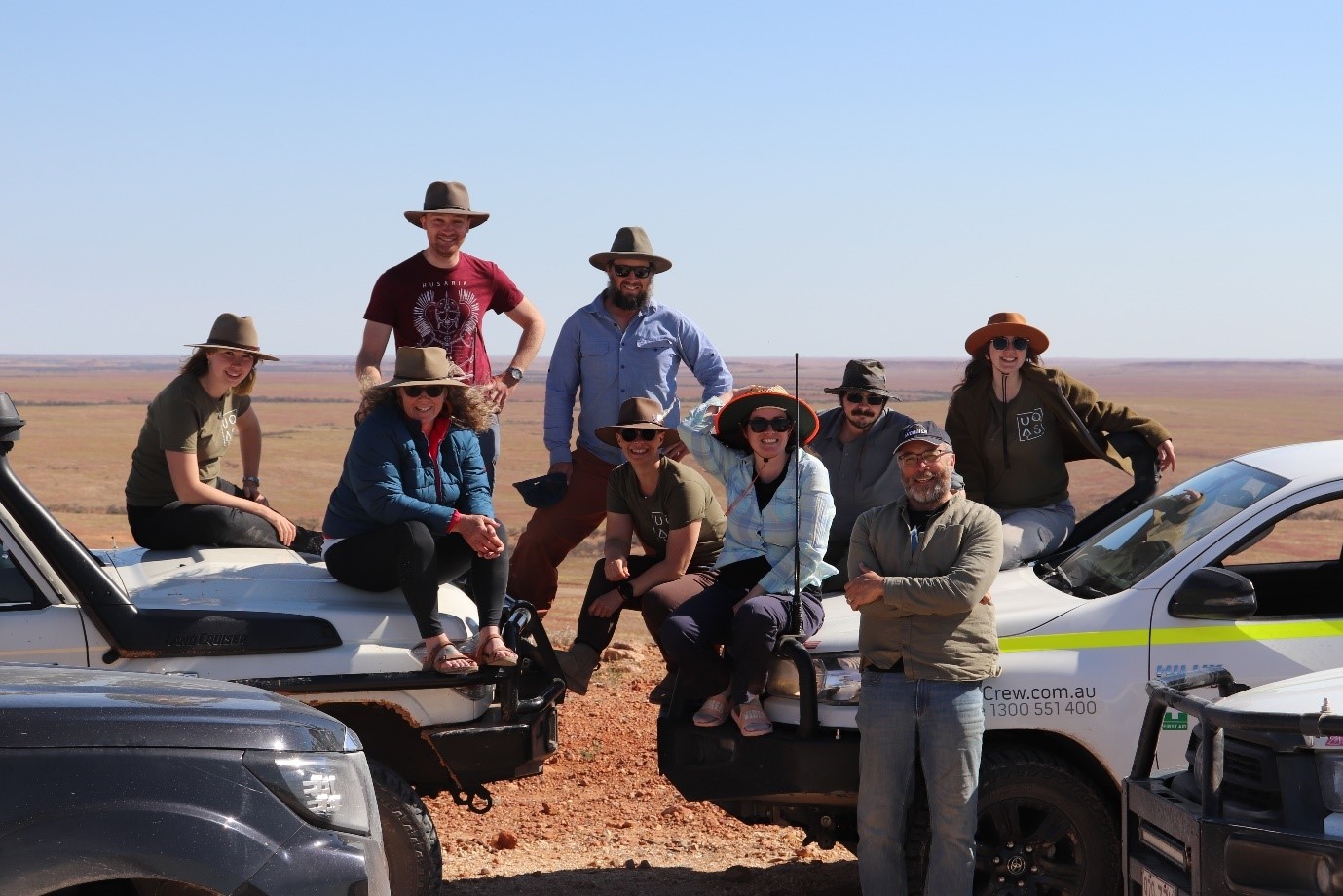Professor Andrew Fairbairn, and Makayla Harding
Abstract
 With a wide variety of biomes and extreme fluctuations in precipitation and water availability, southwest Queensland’s Channel Country saw Indigenous Australians develop a unique suite of subsistence strategies to live in this equally unique environment. Falling within the ‘seed grinding belt of Australia’, ethnohistoric accounts report a combination of semi-permanent habitation and seasonal mobility, as well as intensive seed collection, storage and grinding, information that has led to claims by Jan Gerritsen and Bruce Pascoe that the Channel Country saw the development of agriculture. Ethnobotanical accounts more generally indicate a close connection between people and the economic and medicinal plants on their country, employing a wide range of spiritual and practical management and collection strategies.
With a wide variety of biomes and extreme fluctuations in precipitation and water availability, southwest Queensland’s Channel Country saw Indigenous Australians develop a unique suite of subsistence strategies to live in this equally unique environment. Falling within the ‘seed grinding belt of Australia’, ethnohistoric accounts report a combination of semi-permanent habitation and seasonal mobility, as well as intensive seed collection, storage and grinding, information that has led to claims by Jan Gerritsen and Bruce Pascoe that the Channel Country saw the development of agriculture. Ethnobotanical accounts more generally indicate a close connection between people and the economic and medicinal plants on their country, employing a wide range of spiritual and practical management and collection strategies.
Archaeobotanical research can provide an empirical basis to investigate ethnohistorical claims and understand plant use in deep time, and a project on Mithaka Country is developing approaches to use macrofossil and microfossil remains to identify how plants were utilised through time. Targeting a range of settlement remains, including gunyahs (houses) and open-air hearths, from a range of biomes across Mithaka Country, we aim to identify the food taxa present and develop a framework for understanding the range of subsistence strategies employed in the past. Of particular interest is whether we can empirically distinguish plant collection, management, cultivation and domestication. Drawing on the macrofossil record, including the analysis of seeds and fruits, this paper presents the preliminary results of our research, including a predictive approach for identifying forms of plant use and the first results of seed analysis from the gunyahs.
About the Presenter
Makayla Harding is an MPhil candidate at the University of Queensland. She has worked as a field archaeologist for many years in commercial and research settings, and specialises in archaeobotany, or the history of people and plants. Her research interests include using plants to investigate food security, resource management, and resilience of people in the face of changing landscapes. Her current MPhil focuses on testing the Dark Emu Hypothesis on Mithaka Country, QLD, by developing a novel archaeobotanical framework for distinguishing plant management activities.
Andrew (Andy) Fairbairn is an archaeobotanist and archaeologist interested in ancient agriculture, foraging practice and past anthropogenic landscape change. He has worked in Türkiye since 1999, publishing research on past farming practice and economic change in a range of sites including Neolithic Çatalhöyük East, Pınarbaşı and Canhasan III and Boncuklu, where he is the project co-director, as well as Bronze Age, Iron Age and Medieval occupation at Kaman Kalehöyük, Büklükale, Yassihöyük, Kültepe and Kinet Höyük. Andy studied at the Institute of Archaeology in London before working at The Museum of London, Cambridge University, The Australian National University and, since 2006, at The University of Queensland in Brisbane, Australia, where he is Professor of Archaeology. He has ongoing research testing the Dark Emu hypothesis on Mithaka Country, QLD and has published research on sites in the UK, central Europe, Jordan, Papua New Guinea, China and Australia. He is Associate Editor for the journal Vegetation History and Archaeobotany.
About Archaeology Working Papers
The Working Papers in Archaeology seminar series provides a forum for dissemination of archaeological research and ideas amongst UQ archaeology students and staff. All students are invited to attend the series and postgraduate students, from honours upwards, are invited to present their research. The aim is to provide opportunities for students, staff and those from outside UQ, to present and discuss their work in an informal environment. It is hoped that anyone interested in current archaeological directions, both within and outside the School and University, will be able to attend and contribute to the series.
